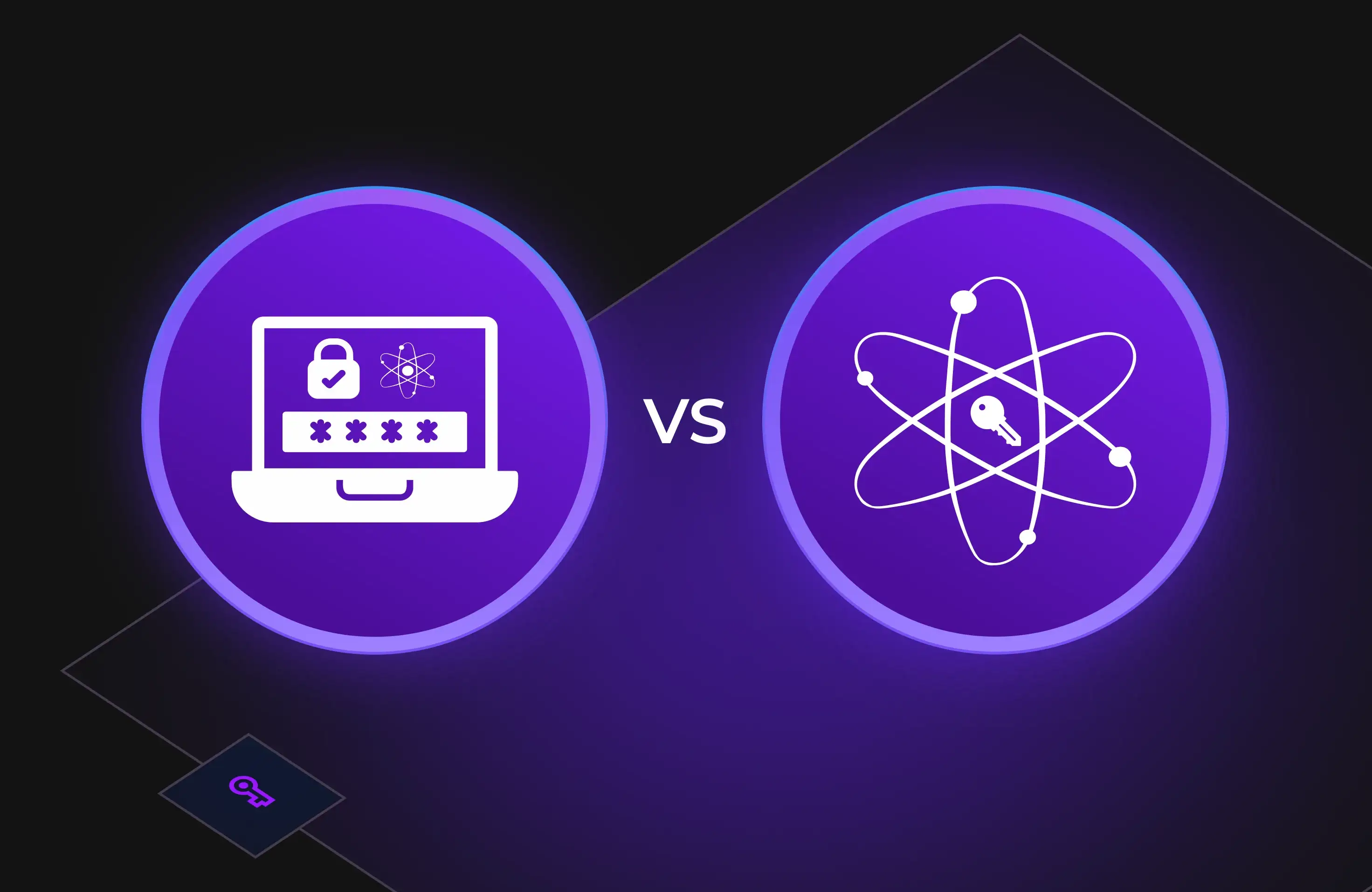The quantum computing revolution is more than just hype. It represents a seismic shift that will reshape cybersecurity, privacy, and digital economics as we know them. Seemingly every week, new advances in quantum hardware and software are reported, with researchers inching ever closer to the so-called “quantum advantage.” And while science is exciting, it comes with a fresh wave of urgency for anyone responsible for securing sensitive data, digital assets, and online transactions.
If you’ve been reading up on these topics, you've likely come across the terms “post-quantum crypto” and “quantum crypto.” While they sound similar, they’re actually two distinctly different approaches to securing info in a quantum-powered world, and understanding the differences will go a long way toward making informed, future-proof decisions.
In this article, we’ll break down what post-quantum crypto and quantum crypto mean, how they differ, the real risks motivating the shift, and most importantly, how your organization can prepare for this coming wave of cryptographic upheaval. We’ll cover:
- What is post-quantum crypto (PQC)?
- What is quantum crypto (quantum cryptography)?
- Differences between post-quantum cryptography and quantum cryptography
- How organizations can prepare for the future now
What is Post-Quantum Crypto?
Let’s start with post-quantum crypto—what does it actually mean? Simply put, post-quantum crypto refers to cryptosystems, such as encryption and digital signatures, that are explicitly designed to resist attacks from both classical and quantum computers.
Current encryption standards, such as RSA and Elliptic Curve Cryptography (ECC), have kept our emails, online banking transactions, and blockchain transactions safe for decades. But quantum computers, with their futuristic parallel processing power, threaten to break these systems wide open. With the advancement of quantum algorithms—most notoriously, Shor’s algorithm—it will (eventually) become trivial for a quantum computer to factor large numbers or compute discrete logs, making today’s cryptography essentially obsolete.
This is where post-quantum cryptography (PQC) comes in. Post-quantum crypto doesn’t rely on problems that quantum computers can easily solve. Instead, it uses complex mathematical challenges like lattice-based constructions, hash-based signatures, and code-based schemes—problems that, at least with what we know today, are believed to be secure even when an attacker has a powerful quantum computer.
The National Institute of Standards and Technology (NIST) and its post-quantum cryptography project have become a leading authority on global PQC standards and ongoing competitions [source].
To summarize:
- Post-quantum crypto upgrades standard mathematical tools, ensuring data stays safe, even in a future full of quantum computers.
- It’s software-based and can fit into most existing hardware and digital workflows.
- It anticipates the “harvest now, decrypt later” threat, where hackers steal encrypted info today and decrypt it years later with powerful enough quantum machines.
What is Quantum Crypto (Quantum Cryptography)?
“Quantum crypto” takes a very different realm, one that looks less like a math exam and more like a physics class. Quantum cryptography uses the principles of quantum mechanics to secure information. So, instead of relying on complicated math problems, it leverages the unique properties of quantum particles.
The most famous technique in this category is quantum key distribution (QKD), notably implemented by protocols like BB84 [source]. Here, eavesdropping on a quantum channel disturbs the quantum states being transmitted (usually photons), making interception not just difficult, but essentially impossible without detection.
With quantum crypto, if someone tries to intercept the quantum bits, the sender and receiver instantly know the channel is compromised. Like QKD has already been deployed in government and military communications in real-world trials, as outlined in this European Commission briefing on QKD networks [source].
All of that said, quantum crypto is not a replacement for classical cryptography in most cases. Why? Because it typically requires specialized (read: ultra-expensive) equipment, like single-photon sources and dedicated optical fiber channels.
This makes it great for securing critical backbone infrastructure, but far less practical for securing everyday web traffic for remote workers or blockchain users.
In essence:
- Quantum crypto uses physics to create unbreakable security, but it’s currently harsh on budgets and infrastructure.
- It’s best suited for environments that require ultra-secure communication—the diplomatic “red phones” of tomorrow.
How Are Post-Quantum Cryptography and Quantum Cryptography Different?
Understanding the practical implications of each approach is crucial when selecting a suitable path for cybersecurity or blockchain upgrades. Here’s a breakdown of what sets post-quantum crypto apart from quantum crypto:
- Differing foundations: Post-quantum crypto uses traditional math but switches to problems that even advanced quantum computers can’t solve easily. Quantum crypto is all about physics and uses the fragile state of quantum particles as the lock and key.
- Implementation complexity: PQC is a software update for most systems—a new algorithm, a new library, often backward compatible with current hardware. Quantum crypto requires all-new infrastructure, such as fiber optics, quantum photon sources, and specialized receivers.
- Deployment and scalability: PQC is designed for today’s world and relatively easy to deploy across cloud environments, mobile devices, and IoT sensors. Meanwhile, quantum crypto is currently limited to highly sensitive networks where cost and complexity are justified, and resources are essentially limitless.
- Security guarantees: Post-quantum cryptography is believed to be secure, given current mathematical knowledge, but further research could eventually uncover weaknesses. Quantum crypto is backed by information-theoretic security: in theory, it’s impossible for an attacker to break without detection (at least for as long as the current laws of physics stand).
- Cost and feasibility: PQC is affordable today and realistic for most organizations to adopt. Quantum cryptography is expensive, specialized, and years away from mass deployment.
How to Prepare for the Quantum Future
With the quantum computing era on the horizon, organizations must start future-proofing their critical infrastructure, customer data, and digital assets. Not two years from now, but today.
The bottom line:
- Post-quantum cryptography delivers immediate, scalable protection against quantum threats, including for blockchain and post-quantum cryptocurrency assets.
- Quantum cryptography is a fundamentally new physics-based security model best suited for highly sensitive or high-value communications.
- Both technologies play different but complementary roles in defending digital ecosystems. One upgrades today’s “locks,” and one invents a completely new kind of “key.”
[Learn more: Your Data is not Safe: Quantum Readiness is Urgent]
Ultimately, those who come out ahead will understand this one fact: Migration is a journey, not a last-minute dash.
Are you ready to protect your data and assets for decades to come?
Request a demo, get a free trial, or contact our team to discuss your quantum security roadmap today. Fortanix is here to help you make your security future-proof.











